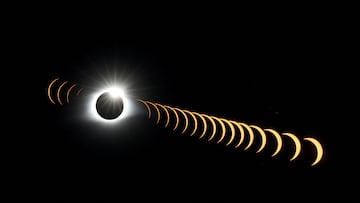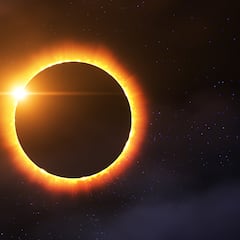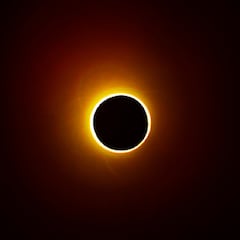Why is the 2024 total solar eclipse better than the one in 2017?
Americans are gearing up to observe one of the most spectacular astronomical events. The total solar eclipse on 8 April 2024 will be even better than 2017.

Nearly every American will be able to experience the solar eclipse that will take place Monday 8 April 2024. While the path of the total eclipse will run in a general south to north direction as opposed to the west to east path of the 2017 event, more Americans live in the path of totality.
An estimated 31.6 million people that live in a swath of the United States from Texas to New England will find themselves in the path of totality, where the whole of the sun will be blotted out leaving only our star’s corona visible. That’s compared to 12 million in 2017. Another 150 million Americans live within 200 miles of the path of totality according to NASA.
Why is the 2024 total solar eclipse better than the one in 2017?
As millions get ready to observe this spectacular astronomical event, 99% of Americans will get a chance to experience it in some form, there are features of the 2024 total solar eclipse could make it more magnificent than the one on 21 August 2017.
You may also be interested in: Why is NASA firing rockets into the 8 April 2024 solar eclipse?
If you can get to the path of totality for the #solareclipse2024 you should. It is literally a night and day difference from 99% to 100% coverage. It is a life-changing experience. Here's a look at the path of 100% totality through the middle of the U.S. pic.twitter.com/2Qag4tpaO7
— Brad Panovich (@wxbrad) March 25, 2024
The 2024 total solar eclipse will be bigger, longer and darker
Firstly, the Earth and Moon are closer together than seven years ago. This means that the shadow cast will be much wider, between 108 and 122 miles at any given moment this year compared to roughly 62 to 71 miles in 2017. This will also make the sky darker within the path of totality’s central area.
Additionally, the amount of time that people will be able to experience the totality in 2024 will be longer than seven years ago. In 2017, the longest period of totality was 2 minutes and 42 seconds.
This year when the Moon’s shadow crosses into Texas totality will last for 4 minutes and 26 seconds. Even when it exits the US and enters Canada viewers will experience up to 3 minutes and 21 seconds of totality.
2024 total solar eclipse will provide more opportunities to observe astronomical wonders
The 2024 total solar eclipse is taking place while the Sun is reaching its solar maximum. Seven years ago it was nearing its solar minimum. As part of our star’s 11-year cycle of its magnetic field flipping, solar activity increases and decreases.
This year there will be more opportunities for observers to witness a grander corona display. During a solar maximum there are more giant eruptions from the Sun. Last time around, there were only three streamers or prominences visible.
These appear as bright, pink curls or loops coming off the Sun and will likely be visible throughout the corona as opposed to being restricted to the equatorial regions in 2017.
Related stories
Additionally, the night-like effect in the path of totality will present viewers with the chance to see Venus to the right of the total eclipse and Jupiter to the left. Further to our sister planet’s right will be Saturn and Mars, but will be hard to see with the naked eye.
If you are really lucky, and have a telescope or binoculars, you may be able to spot the comet Pons-Brooks. Also know as the ‘devil comet’ due an eruption of gas and ice in July that caused its coma to take the shape of a devil’s horns, it will be near Jupiter.



Complete your personal details to comment